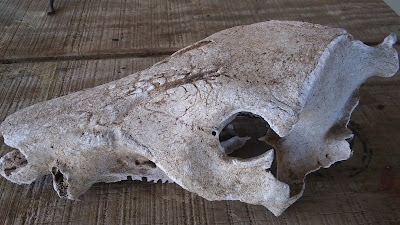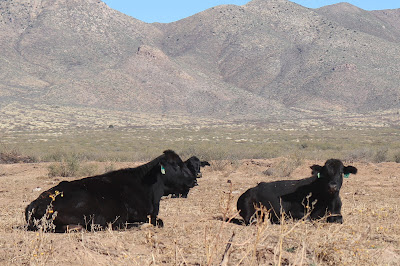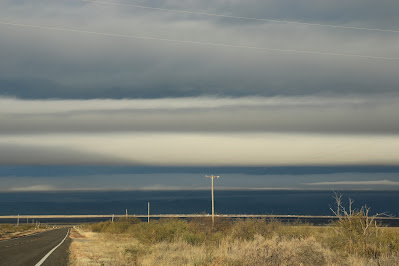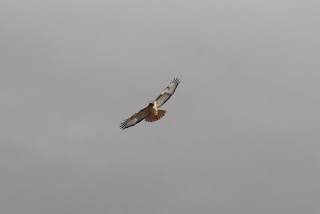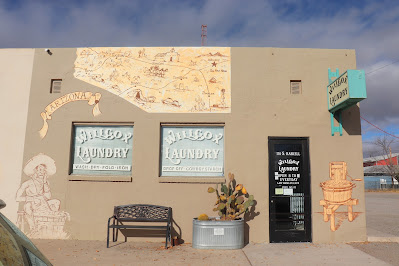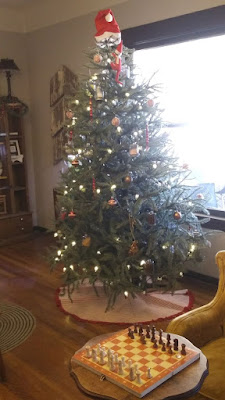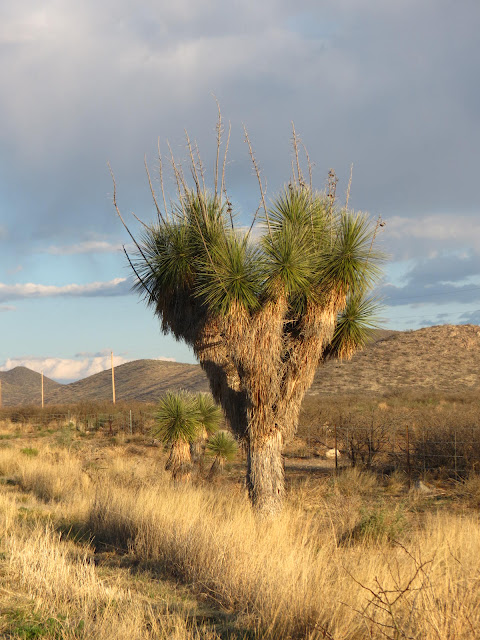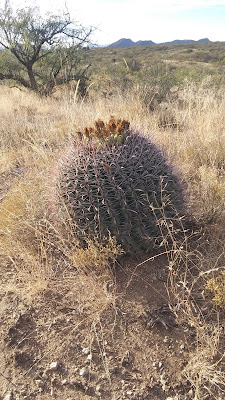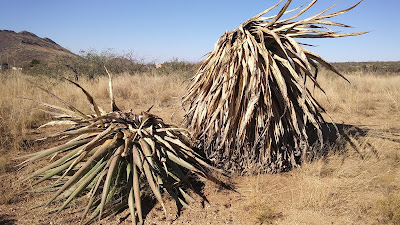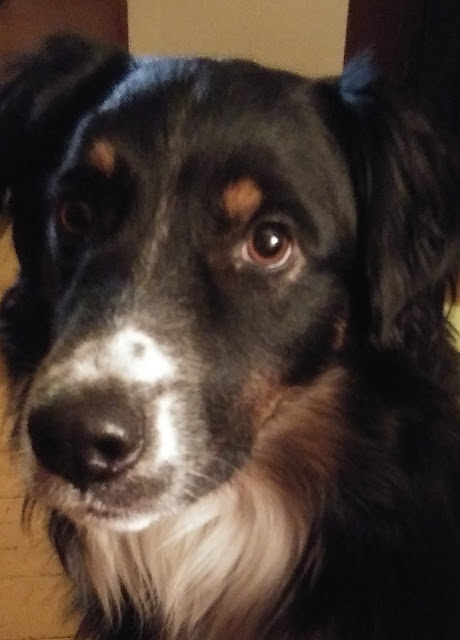 |
| My beautiful boy |
He is gone, my beautiful boy, the dog with issues we adopted last December; the dog who quickly fell in love with me and the dog I soon after came to love; the dog who gradually fell in love with David, too, and the dog David eventually couldn’t help loving back. He wasn’t suffering (he loved his life, which made it all the harder for us to end it), but he has gone to join our Sarah, leaving us behind.
He was good-looking, smart, physically healthy, playful, energetic, and he became -- with us -- affectionate, downright snuggly. In our year together, he learned about manners and obedience and play and love. He seemed grateful. And he was joyful! Once he figured it out, he was thrilled to have a family and a home! But tragically, he could not overcome the impulse to bite, which may have been a result of past mistreatment … or a necessity of dog-eat-dog survival picked up while he was a stray … or some awful genetic kink. We’ll never know. But every so often his Mr. Hyde personality would appear in a terrifying snarl, and he would strike like a cobra. That had pretty much stopped when it was only the three of us together, but….
“Maybe if you were younger, you’d have had more patience –” began one otherwise sympathetic recipient of the sad news.
No. We have more patience now than we ever had when we were younger, and little Peasy had the benefit of over a century and a half of combined wisdom acquired by his dog parents. Other than temporary time-outs and occasional sharp words (the latter bursting from us in the fright of the moment rather than carried out as “discipline”), all his training was positive in nature. He got focused training. He had attention, lessons, exercise, play, and home comforts. He learned so much! And, as I say, we loved him, he knew we loved him, and he loved us in return – all of us loving each other more and more with each passing week.
So I don’t fault any of the three of us. We humans were patient and loving and consistent, and he, the dog, was willing and eager. He was not a bad boy. He just couldn’t control the bad feelings when they came on him. Who knows where they originated? It doesn’t matter.
When I posted about Peasy on this blog during his year with us, I mentioned that he had “issues,” made reference to the “Mr. Hyde” side of his personality, even his “cobra strikes,” but I never came right out and said anything directly about biting. Except when those lightning-flash incidents occurred, he was sweet and obedient and affectionate, so we hoped he would gradually feel secure and that it would stop happening. But over the summer and fall he bit two friends and one relative, despite our precautions. He snapped at me but only drew blood once, while David he bit seriously three times, and the last time (back in Michigan) struck us as a deal-breaker, because we could give no situational excuse for it. We made arrangements. But the day before his life was scheduled to end, we backed out. Just couldn’t do it....
But. Dangerous. Frightening. An untenable situation. And deep, deep heartbreak.
Do online searches for “heartbreak +dog,” and almost all the results you’ll see have to do with dogs dying of illness, trauma, or old age. When I finally came upon the term “reactive dog” and the possibility of clicker training, I fell on it eagerly, more optimistic and confident than desperate. This was despite what I’d been told by a woman who provides kennel space and the necessities of life to unadoptable dogs, at least one of them a dog even she can’t touch after having it in her care for years. She warned me flat-out (and this was a long conversation; she wasn’t just giving an uninformed opinion) that I would never be able to trust Peasy not to bite.
“Do you understand? You’ll never be able to trust him.”
I still thought we could do it. How could we not try? We were aware of certain trigger situations and could work on those. But the otherwise unpredictability of other cobra strikes made it impossible to work on general desensitizing of our basically good, sweet dog. He would have to be desensitized to each individual separately, one at a time, and each individual would have to live in our household, and still it would take months, as it had with us. Not feasible.
So we kept him away from people. If we were dining outdoors with friends, he was on the porch; if we were on the porch, he was outdoors; when our little great-grandchildren visited for an evening, he spent the evening in my car. That's how we got through our Michigan summer.
Actually, we had talked about finding him another home out in Arizona after the very first bad bite, even before we returned to Michigan for the summer, but I was unwilling to “surrender” him to a shelter or a “rescue” organization, giving up any say over what strangers might adopt him, how long it might take for anyone to want him at all (he’d been in the pound in Graham County for almost four months before I came along), and what might happen to him in the meantime and with more strangers. Other people might not be as understanding and patient as we were and might try, as did one young Arizona trainer I tried early on, the tough love, “show-him-who’s-boss” approach, which generally serves to reinforce all the worst fears of a reactive dog. Even if not harshly corrected (or worse, outright abused), he would be traumatized all over again by going from a loving home to another institutional incarceration or to strangers. I couldn’t do that to him then, in Arizona, and I certainly couldn’t do it later, in Michigan, after bonding with him more and more deeply. Not to mention the fact that it would hardly be fair to expose new owners to the risks he posed.
We took him to an interview with a special trainer in Michigan, postponing our departure for Arizona for the good of our dog. This highly credentialed, lovely woman was understanding and patient but not exactly encouraging. She did, however, suggest the possibility of anti-anxiety medications, and we jumped on that hope. She and our vet conferred. Peasy started on meds, and he came west with us, after all, back to his Arizona beginnings….
 |
| little Pea in Cochise County |
One situation that had been bad from the beginning was that whenever we dropped something on the floor and reached to get it, he would lunge and bite. With the meds (and time, during which his trust in us increased), that trigger ceased to be one. We could drop things all over the house and pick them up with no inappropriate behavior from Peasy. Not that we ever completely relaxed our guard, but the improvement was noteworthy. And during our evening pack time, he was more relaxed and snuggly all the time.
But as cuddly and kissy and loving and appreciative as he was with us – more so every day -- he was still nervous with other people. It even seemed, paradoxically, that the more he relaxed and the closer he bonded with us, the more eager he was to “protect” us from other people, seeing them as threats to us. “He loves us too much,” the Artist said sadly, even as he and Peasy were cuddling on the bed.
Because Peasy’s besotted love for us was irresistible, as was his enthusiasm for our most ordinary routines. "Where's your lion? That's right! That’s your lion!” He learned his "lamb" in a single day. He had the most exuberant nature!
But it was inevitable that sooner or later another bad bite was going to occur. Luckily for us, the person bitten, fond of us and even (for some weird reason, believe it or not) fond of our crazy dog, did not threaten to sue, but she did talk to me frankly about the danger our dog presented. “What if it had been a child?”
An exception to his general people-phobia was my hiking and dog-walking partner. He seemed fine with her. -- But who knew when some misperception might set him off?
 |
| Friends!!! |
We brought him home for the first time on December 10, 2020, and on December 29, 2021, the three of us took our last ride together. He was always happy to go for a ride -- anywhere, just to be with us -- and if we left him for 10 minutes, when we came back to the car, he was a bundle of wiggles and kisses. He jumped eagerly into the back seat every chance he got.
 |
| "I'll go anywhere with you!" |
I had given him his usual anti-anxiety pill early in the morning and gave him four more after our morning run and then two more in the car, because -- why not? I figured that if he became sleepy or drowsy before we reached the dreaded destination, so much the better. He sat up and looked out the window for about half the trip, then lay down on the seat but never did close his eyes. Every time one of us looked back at him, he was looking at us.
“You want to be with him?” we were asked at the vet clinic. Of course! We did not want our boy to feel abandoned or panicked or fearful. And Peasy's leave-taking went smoothly and peacefully. We held him and stroked him and told him what a good dog he was. And he was a good dog – as good as he could be!
“Look at it this way. We gave him the best year of his life,” the Artist said.
More than that: we gave him a life!
 |
| Loving his life |
Peasy’s didn’t have the 17 years that Nikki had (14 with us after her early years, shrouded like Peasy’s youth in mystery), and he didn’t have the 13 years Sarah had, in the bookstore and on our travels, from puppyhood to gentle old age. But it was a good, happy, love-filled life. And he certainly wasn’t lined up for any such rosy fate when we found him! Odds were about a million to one of that happening.
Oh, my sweet, sweet boy! It hurts me so much that no one outside our home will ever know what a good, darling little boy you got to be with us! Plenty of people thought we were crazy to adopt and keep him at all, given the constraints he put on our social life. And if others believed in the good qualities I’ve described, they’ll think surely we must not have tried hard enough to rehabilitate him. In other words, to some people our dog was a monster, and to others we are the monsters.
“I can’t stand sad dog stories!”
So many people have said that to me over the years in my bookstore, and Peasy’s story is a heartbreaker, for sure. But if we’d never brought him into our lives? If he’d continued to languish, unloved, in that concrete-floored cell where we found him? That was no life! With us, he had adventures, running free with me in Arizona and Michigan. He had dog friends in Arizona, and in Michigan and Arizona both he was woven into the fabric of our household, from morning dog-and-dad time on the bed, to dog-and-mom play and running and desert rambles with friends, to evening pack-time with the three of us together.
So mine is a sad story and a happy story, and even as my heart has broken over and over, is still breaking, and will ache for a long time to come, I do not regret for one minute bringing little Pea into our lives to love, sharing joy and love and happiness with that goofy little guy. He was a gift life gave us, and we were the gift life gave him. And when his end came, he was not abandoned or traumatized, and he had no reason to be frightened, because we were right there with him. It was the least we could do for our boy, who tried so hard to be the best dog he could be.
It was a rainy morning. Dark clouds on our way up to and through the mountains. Now and then, scraps of rainbows. Several on our way north to Thatcher, and a complete one on our way home without him. Peasy's rainbow. Let me think that. I miss him so much.
 |
| I will always love you, my boy! |







